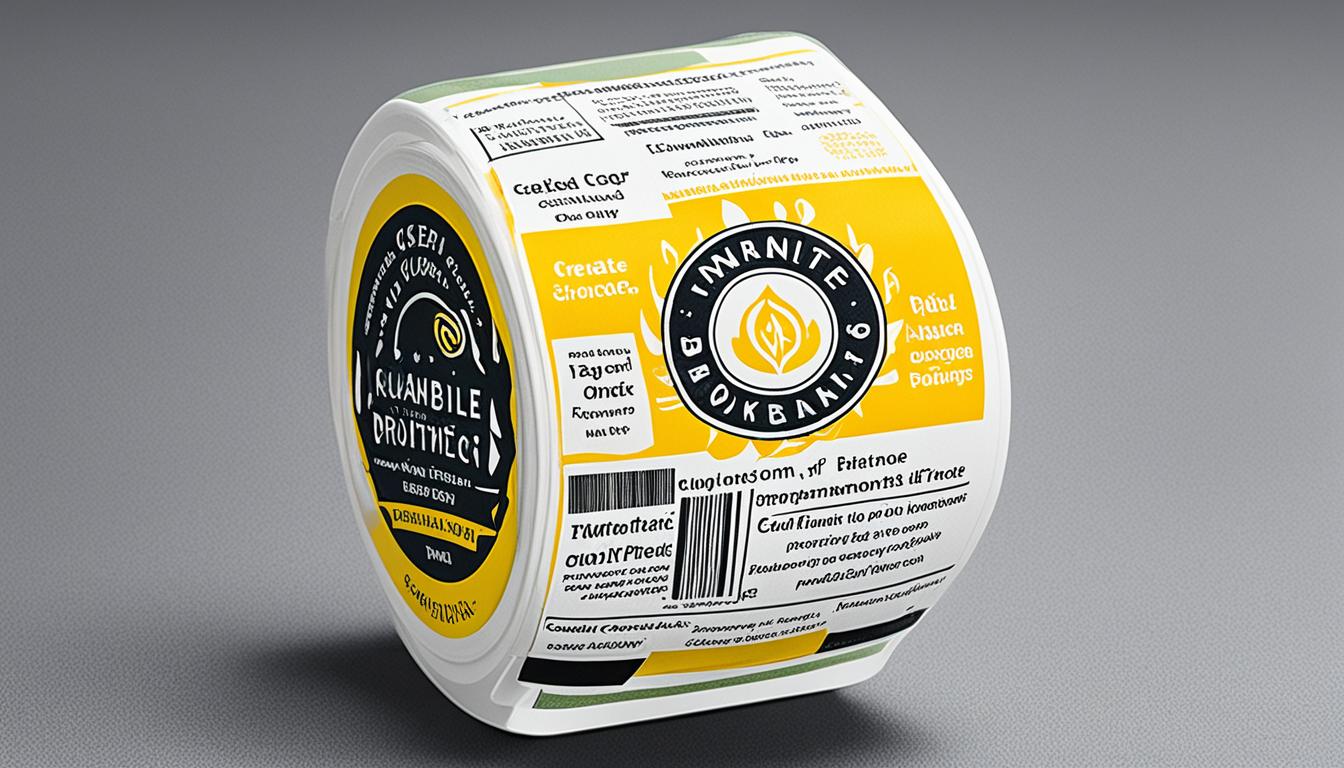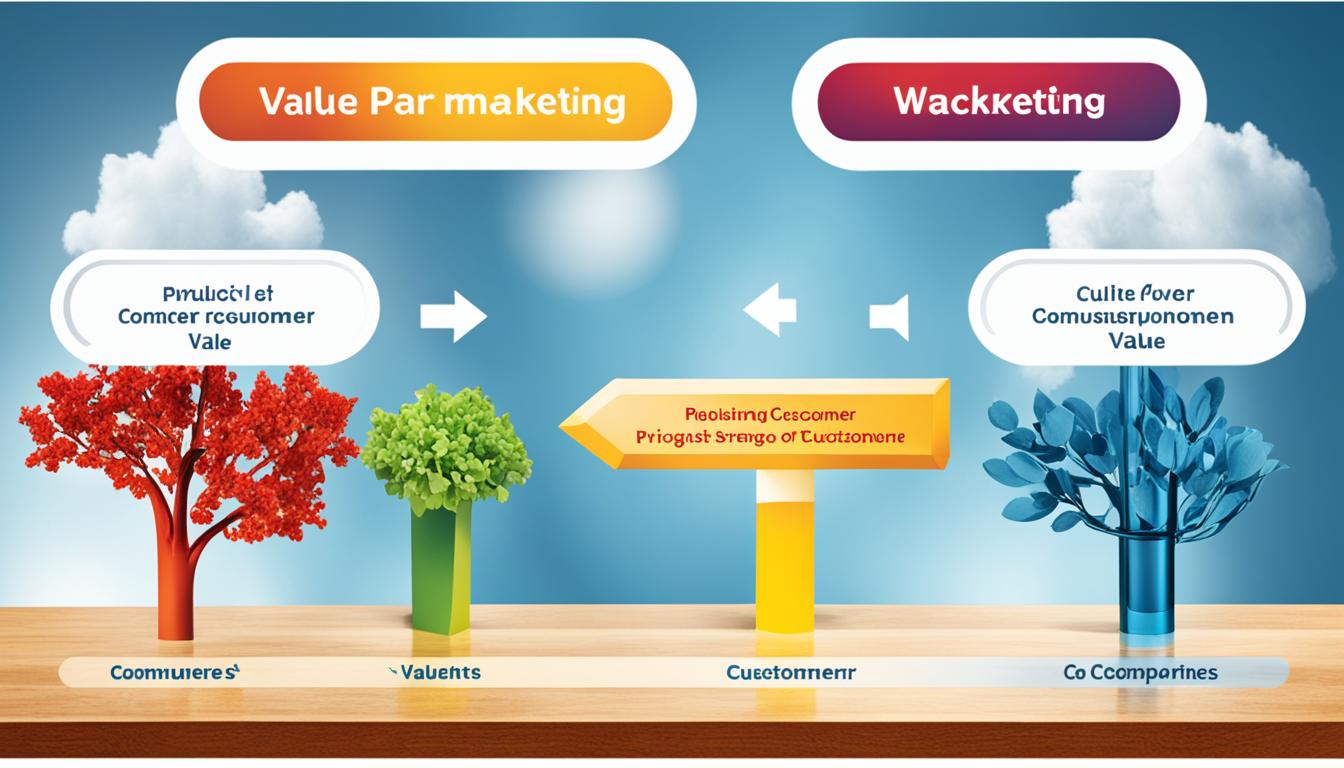Alliance marketing, also known as strategic partnerships or collaborative marketing, is a powerful strategy that involves two or more companies coming together to promote and sell a product, service, or concept. Through joint ventures, cross-promotion, and brand collaboration, businesses can leverage each other’s strengths and resources to reach new markets and achieve mutual benefits.
Whether it’s a small-scale affiliate marketing partnership or a large-scale business alliance, the core objective of alliance marketing is to tap into non-competitive businesses’ customer bases, pool knowledge and expertise, reduce inefficiencies, and turn competitors into partners.
Let’s dive into some examples of alliance marketing to better understand how this strategy works and its potential impact on business growth.
Key Takeaways:
- Alliance marketing involves companies collaborating to promote and sell products or services.
- It enables businesses to access new customers, pool resources, and reduce inefficiencies.
- Examples of alliance marketing include collaborations between non-competitive businesses, destination alliances in the tourism industry, and technology alliances to promote new devices or concepts.
- Strategic planning, research, and education of internal stakeholders are crucial for developing successful alliance marketing campaigns.
- Career titles in alliance marketing include alliance marketing managers, market research analysts, and business analysts.
Who Employs Alliance Marketing?
Alliance marketing is a strategy that can be effectively employed by businesses of all sizes and industries. The key to successful alliance marketing lies in finding partners who are interested in cooperation and share common goals. Through strategic partnerships, businesses can combine their resources, expertise, and distribution channels to achieve mutual benefits and drive growth.
In alliance marketing, businesses act as stakeholders, collaborating with their partners to leverage their respective strengths and reach new markets. These partnerships can be formed between companies in the same industry or across different sectors, depending on the shared goals and complementary resources.
Small businesses can benefit from alliance marketing by aligning with larger companies that can provide them with access to wider customer bases and distribution networks. On the other hand, larger businesses can gain insights from smaller, agile partners that may have niche expertise and innovative ideas.
Alliance marketing can also be employed by international businesses seeking to expand their reach and penetrate new markets. By partnering with local companies, international businesses can leverage their partners’ knowledge of the local market, regulations, and consumer preferences.
Ultimately, the success of alliance marketing relies on the identification of compatible partners and the establishment of a cooperative and mutually beneficial relationship. The collaboration between businesses can lead to increased brand exposure, market share, and customer loyalty.
Benefits of Alliance Marketing
Alliance marketing offers several benefits for businesses:
- Access to new customer segments
- Pooling of knowledge, expertise, and resources
- Reduced inefficiencies and costs
- Turning competitors into partners
- Expansion into new markets
Through alliance marketing, businesses can tap into new customer segments that their partners already have relationships with. This allows them to expand their reach and target customers who may not have been otherwise accessible.
By pooling their knowledge, expertise, and resources, businesses can benefit from each other’s strengths, resulting in more effective marketing campaigns and improved products or services. This collaboration also helps businesses reduce inefficiencies and costs by sharing expenses, research, and development efforts.
Alliance marketing presents an opportunity for competitors to become partners and work together towards common goals. This can lead to new opportunities for growth and innovation, as companies can leverage each other’s strengths instead of competing directly.
Finally, alliance marketing enables businesses to expand into new markets by leveraging their partners’ existing networks and market presence. This allows for quicker market entry and reduces the risks associated with entering unfamiliar territories.
Alliance marketing is a strategic approach that businesses can utilize to tap into new markets, access additional resources and expertise, and foster mutually beneficial relationships with partners. By pooling their strengths and working together, businesses can achieve greater success and drive growth in the competitive business landscape.
Why Use Alliance Marketing?
Alliance marketing offers numerous benefits for businesses looking to expand their reach and maximize their resources. By forming strategic partnerships with non-competitive businesses, companies can tap into new markets, gain access to a larger customer base, and leverage each other’s knowledge and expertise.
One of the key advantages of alliance marketing is the opportunity to pool knowledge and expertise. When businesses collaborate, they can share best practices, insights, and industry trends, which can lead to innovative ideas and strategies. By combining their collective knowledge, companies can stay ahead of the competition and drive mutual growth.
Furthermore, alliance marketing allows businesses to reduce inefficiencies and expenses. By partnering with other businesses, companies can share resources and distribution channels, which can lead to cost savings and streamlined operations. This collaborative approach can help businesses deliver better products or services to their customers while optimizing their internal processes.
Another significant benefit of alliance marketing is the ability to reach new markets. By partnering with non-competitive businesses, companies can tap into their partner’s customer base and gain access to new demographics. This can open up opportunities for cross-promotion and increased brand exposure. Additionally, entering new markets through an alliance can be more cost-effective and less risky compared to entering independently.
Ultimately, alliance marketing enables businesses to turn competitors into partners. Instead of viewing competitors as a threat, companies can leverage their complementary strengths and resources to create mutually beneficial collaborations. This shift in mindset can lead to new growth opportunities and expanded market share.
Here is a table highlighting the key benefits of alliance marketing:
| Benefits of Alliance Marketing |
|---|
| Access to a broader customer base |
| Pooling of knowledge and expertise |
| Reduced inefficiencies and expenses |
| Opportunity to reach new markets |
| Turning competitors into partners |
Types of Alliance Marketing
Alliance marketing offers various opportunities for businesses to collaborate and achieve mutual benefits. Let’s explore some of the different types of alliance marketing:
1. Non-Competitive Business Alliances
In this type of alliance, non-competitive businesses come together to provide end-to-end services to the same customer. By leveraging each other’s strengths, these businesses can offer comprehensive solutions that meet the customer’s needs more effectively.
2. Destination Alliances
Destination alliances are formed when businesses in the tourism industry join forces to promote a specific location or destination. By collaborating on marketing efforts, these businesses can attract more tourists, increase visitor spending, and enhance the overall visitor experience.
3. Technology Alliances
Technology alliances are established to promote new devices or concepts. By combining their expertise, resources, and technologies, businesses can create innovative and integrated solutions that address evolving consumer needs and drive market growth.
4. Alliances to Expand into New Markets
To expand into new markets, businesses can form alliances that enable them to tap into overseas or domestic markets successfully. By leveraging the local knowledge, distribution channels, and customer base of their alliance partners, companies can navigate unfamiliar territories and seize growth opportunities.
These different types of alliance marketing demonstrate the flexibility and versatility of this strategy in helping businesses achieve their goals and expand their reach.
How is an Alliance Marketing Campaign Developed?
Effective alliance marketing campaigns require strategic planning and coordination. The marketing team identifies business opportunities that can be met through an alliance and conducts thorough research to find prospective allies. When considering potential partners, factors such as the likelihood of a return on investment, compatibility of management styles, and stability are taken into account.
Once the right alliance is formed, joint marketing commitments are established to ensure a collaborative effort. The marketing team then focuses on educating internal customers about the alliance and its benefits. This internal education process ensures that all stakeholders are aligned and understand the goals and objectives of the alliance.
Furthermore, long-term programs and goals are set to ensure the success and ongoing collaboration of the alliance. Clear objectives and milestones are outlined to measure the progress and effectiveness of the alliance marketing campaign.
Steps in developing an alliance marketing campaign:
- Identify business opportunities that can be met through alliances.
- Conduct research to find prospective allies.
- Evaluate potential partners based on compatibility and stability.
- Form the alliance and establish joint marketing commitments.
- Educate internal customers about the alliance.
- Set long-term programs and goals to ensure ongoing collaboration.
By following a strategic planning process and conducting thorough research, businesses can create successful alliance marketing campaigns that drive mutual benefits and business growth.
Career Titles in Alliance Marketing
In the field of alliance marketing, there are several career titles that play crucial roles in driving successful collaborations. These positions include Alliance Marketing Managers, Market Research Analysts, and Business Analysts.
Alliance Marketing Managers
Alliance Marketing Managers are responsible for handling the planning and execution of alliance marketing strategies. They research potential partners, assess their compatibility, establish goals and metrics for the alliance, and manage communication between partners. Additionally, Alliance Marketing Managers evaluate the effectiveness of the alliance and make adjustments to ensure its success.
Market Research Analysts
Market Research Analysts play a key role in alliance marketing by gathering valuable data about market segments and competitors. They analyze this information to identify potential opportunities for alliance marketing, helping businesses make informed decisions and target their efforts effectively. Market Research Analysts provide insights to drive the development of successful alliance marketing campaigns.
Business Analysts
Business Analysts play a crucial role in alliance marketing initiatives by reviewing and analyzing business strategies. They assess the effectiveness of existing alliance marketing campaigns, identify areas for improvement, and recommend changes to drive success. Business Analysts help align alliance marketing efforts with overall business objectives and contribute to the strategic planning of future initiatives.
Together, Alliance Marketing Managers, Market Research Analysts, and Business Analysts form a collaborative team dedicated to driving the success of alliance marketing initiatives. Their expertise and strategic insights are essential for achieving mutual benefits and fostering growth through effective partnerships.
How Can a Marketing School Help in Alliance Marketing?
A marketing degree program can provide individuals with the knowledge and skills needed to excel in alliance marketing. These programs cover a wide range of marketing strategies, including alliance marketing. Students learn how to effectively communicate and coordinate with potential partners, as well as develop a deep understanding of target consumer segments. A marketing degree program also helps individuals understand the nuances of both producer-to-consumer marketing and business-to-business marketing, including the specific strategies and tactics used in B2B marketing.
By enrolling in a marketing degree program, students can gain a solid foundation in marketing principles and strategies. They develop a strong knowledge base and skill set that can be applied to various marketing scenarios, including alliance marketing. These programs typically offer courses that cover topics such as market research, consumer behavior, brand management, marketing communications, and digital marketing.
One of the key advantages of pursuing a marketing degree program is the opportunity to learn from industry professionals and experienced marketing professors. These individuals bring real-world knowledge and insights to the classroom, providing students with valuable practical examples and case studies. Students also have the chance to network with their peers and build connections that can be beneficial in their future marketing careers.
To further enhance their alliance marketing knowledge, students may have the option to specialize in courses or concentrations that focus specifically on B2B marketing. This specialization provides in-depth training on the unique dynamics of business-to-business marketing, including how to identify and target key stakeholders, develop strategic partnerships, and navigate complex decision-making processes.
Alliance Marketing Courses in a Marketing Degree Program
A marketing degree program may offer specific courses that delve into alliance marketing concepts and strategies. These courses aim to provide students with a comprehensive understanding of the key elements involved in forming and maintaining successful alliances. Some example courses include:
- Alliance Marketing Strategy
- Collaborative Marketing Techniques
- Strategic Partnerships and Joint Ventures
- Brand Collaboration and Co-Marketing
- International Alliance Marketing
By taking these courses, students can develop the necessary skills to effectively navigate the complex landscape of alliance marketing. They learn how to identify potential partners, negotiate mutually beneficial agreements, and develop marketing campaigns that leverage the strengths of each alliance member.
With a marketing degree program, individuals can acquire the knowledge and skills necessary to excel in alliance marketing. Whether they pursue careers as alliance marketing managers, market research analysts, or business analysts, a strong foundation in marketing principles and strategies will set them apart in the competitive marketing industry.
Top 10 Strategic Alliance Examples
To illustrate the power of strategic alliances and partnership, here are 10 real-world examples of successful brand collaborations. These alliances demonstrate how businesses, with shared goals, come together to strengthen their brands, pool resources, expand reach, increase market share, and generate sales.
1. Uber and Spotify
Uber, the popular ride-hailing service, and Spotify, the leading music streaming platform, joined forces to enhance the in-car experience for customers. Through this alliance, Uber riders can now access their Spotify playlists during their rides, allowing for a personalized and enjoyable journey.
2. Starbucks and Target
Starbucks, the multinational coffeehouse chain, partnered with Target, a renowned retail corporation, to open Starbucks cafés within Target stores. This collaboration expanded Starbucks’ reach to new locations and enabled Target customers to enjoy quality coffee while shopping.
3. Red Bull and GoPro
Red Bull, known for its energy drinks, and GoPro, a leading action camera company, formed a strategic alliance to capture and share extreme sports content. This partnership involved joint marketing efforts, including events and sponsorship, to engage audiences, increase brand exposure, and promote both companies’ products.
4. Apple Pay and MasterCard
Apple Pay, the mobile payment platform, partnered with MasterCard, one of the world’s largest payment processors, to provide secure and convenient payment options to millions of consumers. This alliance allowed Apple users to link their MasterCard accounts to Apple Pay, enhancing the user experience and expanding the reach of both brands.
5. Nike and Apple
Nike, the renowned sportswear brand, collaborated with Apple to create a seamless integration between Nike’s running app and Apple’s iOS platform. This partnership combined Nike’s expertise in fitness with Apple’s technological capabilities, allowing runners to track their progress and share it with friends, expanding the reach of both brands within the fitness community.
6. Airbnb and Flipboard
Airbnb, the popular online marketplace for lodging, teamed up with Flipboard, a personalized news and content aggregation platform, to offer curated travel guides to Flipboard users. This alliance delivered valuable travel content to Flipboard’s audience while promoting Airbnb accommodations, enabling both brands to reach new customers and generate sales.
7. BMW and Louis Vuitton
BMW, the luxury car manufacturer, collaborated with Louis Vuitton, the renowned fashion house, to create a line of exclusive luggage tailored specifically for BMW’s i8 plug-in hybrid sports car. This strategic alliance combined the craftsmanship and prestige of both brands, providing BMW customers with a highly desirable and luxurious accessory.
8. McDonald’s and Coca-Cola
McDonald’s, the global fast-food chain, and Coca-Cola, the iconic beverage company, have had a long-standing strategic alliance. This partnership ensures that McDonald’s exclusively serves Coca-Cola products across all its locations. This alliance strengthens the brand identities of both companies and drives sales through consistent product offerings.
9. GoPro and Red Bull
GoPro and Red Bull formed a reciprocal alliance that fostered collaboration and co-marketing efforts. Together, they crafted high-octane content that showcased the capabilities of GoPro cameras while promoting the extreme sports and adrenaline-fueled events associated with the Red Bull brand. This partnership allowed both companies to expand their market reach and engage their target audiences.
10. Amazon and Whole Foods
Amazon, the e-commerce giant, made a significant strategic move by acquiring Whole Foods, the premium grocery store chain. This partnership enabled Amazon to expand its presence in the grocery industry and provided Whole Foods with the resources and expertise of a technology and logistics powerhouse. The alliance between these two industry leaders created a synergy that generated sales and offered customers enhanced shopping experiences.
The examples above demonstrate the power of strategic alliances and how businesses, by collaborating, can achieve shared goals, independent growth, and market success. These partnerships serve as inspiration for companies seeking to pool resources, expand their reach, increase market share, and generate sales.
| Alliance Example | Brands |
|---|---|
| 1 | Uber and Spotify |
| 2 | Starbucks and Target |
| 3 | Red Bull and GoPro |
| 4 | Apple Pay and MasterCard |
| 5 | Nike and Apple |
| 6 | Airbnb and Flipboard |
| 7 | BMW and Louis Vuitton |
| 8 | McDonald’s and Coca-Cola |
| 9 | GoPro and Red Bull |
| 10 | Amazon and Whole Foods |
Conclusion
Alliance marketing is a powerful strategy that enables businesses to achieve growth and success through collaboration and strategic partnerships. By forming alliances, companies can leverage each other’s resources, expertise, and customer bases to tap into new markets and reach a wider audience.
Strategic partnerships allow businesses to pool their strengths and navigate challenges together, resulting in mutual benefits and long-term sustainability. These collaborations can lead to increased brand visibility, improved market share, and higher sales revenue. By combining forces, companies can overcome limitations and achieve business growth that would be difficult to attain independently.
The examples of successful alliance marketing illustrate the importance of finding partners with shared goals and complementary resources. Whether through non-competitive business alliances, destination alliances in the tourism industry, or technology alliances, the key is to identify partners who can complement each other and contribute to a strong alliance strategy.
With proper planning, effective communication, and strategic execution, alliance marketing can be a win-win strategy for all parties involved. It allows businesses to expand their reach, unlock new opportunities, and establish a competitive edge in the market. By harnessing the power of collaboration, companies can achieve sustainable growth and unlock the full potential of their business.
FAQ
What is alliance marketing?
Alliance marketing occurs when two or more companies cooperate to jointly promote and sell a product, service, or concept.
Who can employ alliance marketing?
Alliance marketing can be employed by virtually any business when it can find partners interested in mutually beneficial cooperation.
What are the benefits of alliance marketing?
Alliance marketing allows businesses to gain access to a non-competitive businesses’ customers, pool knowledge and expertise, reduce inefficiencies, turn competitors into partners, and reach new markets.
What are the different types of alliance marketing?
Different types of alliance marketing include alliances of non-competitive businesses, destination alliances in the tourism industry, technology alliances, and alliances to expand into new markets.
How is an alliance marketing campaign developed?
An effective alliance marketing campaign requires strategic planning, research, identification of prospective allies, establishment of joint marketing commitments, education of internal stakeholders, and the creation of long-term programs and goals.
What are the career titles in alliance marketing?
Career titles in alliance marketing include alliance marketing managers, market research analysts, and business analysts.
How can a marketing degree program help in alliance marketing?
A marketing degree program provides individuals with the knowledge and skills needed to excel in alliance marketing, including effective communication and coordination with potential partners, understanding of target consumer segments, and knowledge of B2B marketing strategies.
What are some examples of successful strategic alliances?
Examples of successful strategic alliances include partnerships between Uber and Spotify, Starbucks and Target, Red Bull and GoPro, and Apple Pay and MasterCard.
What is the importance of alliance marketing?
Alliance marketing allows businesses to collaborate, pool resources, and leverage each other’s strengths to tap into new markets, reach new customers, and achieve business growth.







